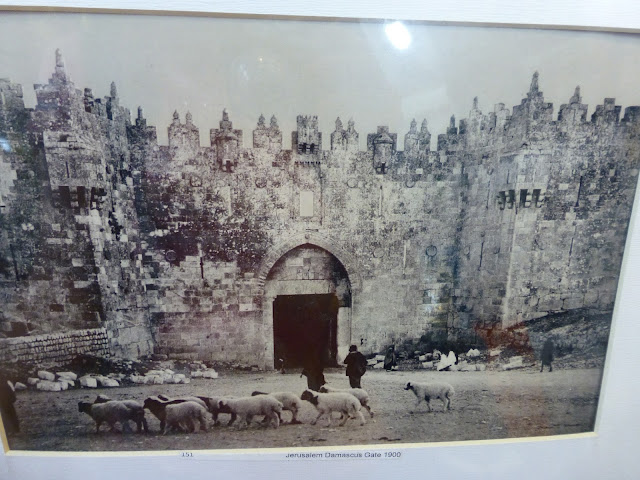Spain: Part 1
I just spent the last two weeks in beautiful Spain. It is different than I expected, and wonderful. I had a layover in Barcelona on my way over. It wasn’t a long layover, but it was just long enough for me to know that Barcelona is the kind of city that requires much longer than an hour and a half! The Plaça d’Espanya is breathtaking.
My main purpose in coming to Spain was for a two-week Spanish intensive. I have been wanting to study the language seriously for some time now, and this presented a perfect opportunity. I have spent anywhere from 4 to 6 hours each day speaking Spanish, depending on whether or not I had walking tours after class, or if I spent a lot of time chatting with my host family, etc.
As a part of the course, I got to stay with a host family in Seville. The family has made traditional Spanish food for me to try for each lunch and dinner. Spanish food is different, but delicious!
Chicken, bread, tomato and carrot salad, olives
Fried fish
Salad!
Gazpacho, vegetables, chicken, tuna, and eggs.
Tomato, lettuce, egg, and tuna salad
Garbanzo beans with spinach
One of the things that A pointed out is the historical mix of cultures that is still evident today in Southern Spain. Not only do they have a strong European influence, but they have incorporated Islamic architecture due to the Muslim Arab rule in Spain, which lasted over 700 years in the South. Typical architectural elements in Islamic architecture include a heavy use of decorative tiling, ornately shaped stucco, and wood roofs. They do not work in stone or include any human or animal imagery in their decoration so as not to disrespect deity.
The entrance of the Alcázar.
Woodwork on the ceiling and stucco beneath.
Closeups on some of the ornate stucco and tiling. There is no stonework in this area of the Alcázar.
Muslim architecture also has some sort of running water for daily religious ablutions, and this one had a little fountain running into a lily pond.
Catholic Christian architecture is very different, with a predominate use of stone, and the use of both human and animal images, both as religious and political iconography, as well as for other decorative use. It is incredible to see how they have mixed these two styles together. In the Alcázar in Seville, there is a section that is strictly Islamic (see above), and a section in which the two styles are meshed together.
Woodwork on the ceiling and stucco on the walls, but also stone!
Beautiful wood inlays.
Beautiful stone arches with Muslim influence. It's difficult to see here, but there are animals and sometimes even human faces worked into the ornate carvings. Definitely Christian influence.
Golden domed ceiling.
The chapel in Alcázar. The front looks typically gothic, but there is beautiful tiling on the sides.
Cisterns in Alcázar.
The "secret" door. It led from the gardens around Alcázar into the Jewish quarter of old Seville.
The Seville Cathedral.
The main structure was originally built in the 12th century as a mosque, and the tower was the minaret. Throughout the next 400 years, it was added to and remodeled into what it is today, including the addition of the bell tower on top of the minaret. However, there are remnants of Roman foundations beneath the tower, with Visigoth structure above that, so the history of the site extends far beyond the 12th century.
The cathedral is the largest gothic cathedral in the world. Gothic architecture is characterized by the long fluted columns, pointed arches, and the peaked ceilings.
Part of the cathedral is a museum with various religious artifacts on display. I was quite pleased to find a Polygot's Bible from the 16th century with Hebrew!
King Ferdinand is an important figure in Seville, since he ended the Islamic rule in Andalusia (Southern Spain).
Detail on some of the ornate ceiling patterns in one of the side chapels.
Christopher Columbus's tomb. The four figures carrying the tomb represent the four kingdoms of Spain that had been united shortly before his expedition to the West.
Detail on an altar piece. This piece was a comic book of sorts, depicting scenes from Christ's life so the illiterate could see and understand.
We were able to climb the tower to look out over the city. It was beautiful! Because it was originally built as a minaret, it has an interesting ascent. Normally one would expect stairs, but this tower came with ramps so horses could ascend with riders. The call to prayer had to be sounded five times a day, and this made it much easier for the person who needed to give the call to prayer!
The cathedral houses an orchard in the courtyard, a leftover from the mosque's original construction.
Many thanks to A for the wonderful tour!
One of my evenings in Seville, I also wandered over to the Triana bridge, which connects Seville and Triana.
I got there as the sun was setting, which made for a beautiful outlook from the bridge.
This is the bridge with the setting sun in the background. It's a lovely place to sit and enjoy the evening. Because it's so hot in the daytime, Spaniards don't come out until nearly sunset. Then they walk around, go to cafes, etc., until 2 or 3 in the morning! So there were a lot of people out on my evening walks.
This is only the first part of my time in Spain. I need to split it up into at least two posts, otherwise it will be much too long. I will write at least one more post that will include more about the Centro Mundolengua (where I studied Spanish), the Plaza del Toros (bullfighting ring) and the Plaza de España in Seville, and my trip to Córdoba.












































































